The potential of hybrid skills in organisational change
The outbreak of Covid-19 and the subsequent pandemic has forced organizations into what could be seen as the biggest experiment in organizational redesign so far. A possible future of work has been put in action, with work from home and social distancing policies questioning the way we work and interact. The impact of these events on the way we work is deep, and it goes beyond just changing the relationship we have with the spaces of work; it also fundamentally question the content of work – what work is performed, how we perform it in terms of pace ( It’s time to stop measuring productivity in hours, Fast Company), habits and work-life balance and how we define the relationship with the organizations we are part of .
The past months highlighted also how, in business terms, creativity and flexibility can be strategic leverages of organizational resiliency (How the Coronavirus Crisis Is Redefining Jobs, HBR). Being able to respond to change fast end effectively has become a key asset for companies undergoing the crisis-related challenges. The increasingly unpredictability of the system we live in makes it necessary for organizations to start reflecting on how to translate these mindsets into skills and foster them in their workforce.
In organizational terms, this shift entails working on people’s potential, in all the steps of the employee experience. More in detail, a shift needs to happen between a fixed to a growth mindset: these terms have been used by Carol Dweck, Stanford Professor and author of Mindset. The New Psychology of Success, Random House, 2016. For Dweck, the fixed mindset assumes a determined set of personal skills and pushes to test them (often in a competitive way). Opposed to this, the growth mindset suggests another vision: that each of us possess qualities that can be cultivated and develop with our own efforts and with the help of others. The second mindset encourages much more passion for challenges, confidence in one’s own efforts, learning, resilience in the face of obstacles, and creativity that can lead to success. Also, it highlights the relevance of the ecosystem as an enabler for growth.
At the organizational level, this translates into the increasingly pressing necessity to foster a culture of hybridization, where job profiles are unique to each employee and built with the support of the organization – which must be able to channel this contamination towards useful objectives for the company.
An example of how hybrid skills are crucial to tackle emerging issues regards cybersecurity. According to the World Economic Forum, “With emerging cyber roles demanding new and more diversified skills, that “perfect candidate” simply does not exist. In fact, new cyber-risks will create unfilled roles for which there are no existing skill matches. Therefore, we must stop recruiting for a circumscribed set of skills, but rather hire people for their ability to transfer skills, willingness to learn, and passion for the subject” ( There is a vast and untapped pool of cyber talent hiding in non-IT degrees, WEF).

But where do we start intervening inside organizations? In terms of employee journey and experience, fostering a culture of hybridization means:
Talent Acquisition
Should we start questioning the criteria we use to evaluate our perspective employees? There is a widespread debate – especially these days – regarding how to guarantee inclusivity in recruiting. There are examples of tools and methods being applied by companies to ensure that the talent pool is evaluated as equitably as it needs to be, for example by eliminating bias in the selection ( Using AI to Eliminate Bias from Hiring, HBR). Similarly, companies are starting exploring ways to integrate people with special needs in the workforce through neurodiversity initiatives, in a way that foster their unique capabilities and transform them into an organizational advantage (Neurodiversity as a Competitive Advantage, HBR).
A similar effort should be put into defining frameworks that strategically capture the skills and mindset of hybrid profiles.
Evaluation
Once defined the criteria to assess perspective talent, organizations should start questioning their evaluation process and its frequency? Do standard, twice a year evaluation methods really apply to the hyper-connected world we live in, where changes happen fast and is able to disrupt systems immediately? Which is the best way to evaluate a hybrid profile?
Talent Retention
What does these transformations mean in term of career paths and employee satisfaction?
First of all, we need to redefine the term career growth, going from a vertical idea of growth to a horizontal way, where people are encouraged into expanding their skills across domains, not only within the same domain going from operative roles to managerial ones.
The ability to span across boundaries, being able to link subjects and domains, is more relevant than ever, as we had the opportunity to witness in recent months
Concurrent forces are making organizations evolve towards new, unpredictable forms. Evidences from the last few months highlighted which could be the most relevant asset to build in the future, among them flexibility, creativity and the ability to collaborate smoothly internally.
As the strategic relevance of networked teams emerge, it becomes clear that hybrid roles are necessary inside organizations, as they are able to foster internal collaboration, creating bridges between units, eliminating siloses and enabling communication between different entities.


 21 July 2020
21 July 2020
